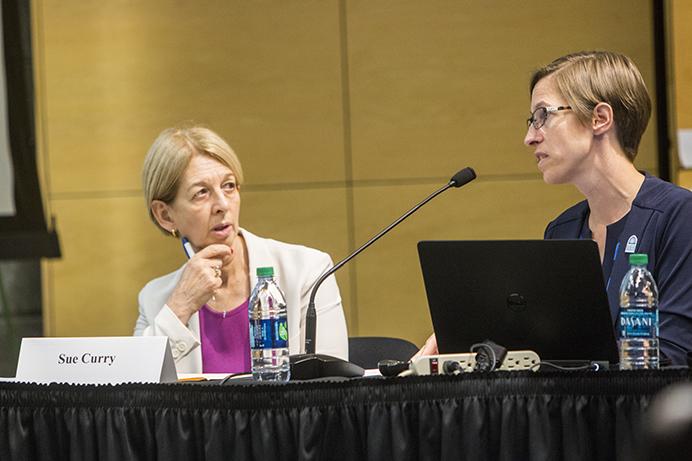With the expansion of distance education at Iowa’s universities, student have more opportunities for flexibility in their education.
Increasing reliance on technology has resulted in the evolution of delivery mechanisms, making distance education “a fast-moving aspect of the postsecondary education sector,” according to a report from the state Board of Regents.
Over the last five years, enrollment in distance-education courses at the three regent universities has increased by 31.6 percent, rising from 59,542 in 2013-14 to 78,383 in 2016-17.
At the University of Iowa, the fall 2016 headcount of students enrolled in these courses was 2,859, up from 2,343 in fall 2014.
The Regents Distance Education Strategic Plan has outlined four goals and strategies to provide access to courses and programs off campus to meet the learning needs of Iowans and allow others to access the programs at the regent universities.
RELATED: UI offers first online lab course
Regent Chief Academic Officer Rachel Boon said this plan came from collaboration among distance education experts at each of the universities with review from the provosts.
UI Associate Professor of political science Brian Lai, the director of undergraduate studies, said the programs are a method of reaching nontraditional students who may not be able to attend regular on-campus classes. He noted that many students have started careers and are looking to obtain a degree.
“With the growth of online majors throughout the country, I think our online major provides a higher quality kind of major experience for students,” Lai said, noting the classes taught online through the UI are taught by faculty who teach on campus.
Students who are on campus can see the benefits of online learning, such as flexible scheduling, Lai said, but he said there will always be a demand for learning in a university setting.
RELATED: Online education worries some
“So many of our on-campus students are participating in online courses,” Boon said during the regents’ meeting. “… In some cases, it’s a better fit for their learning style, and in other cases, it’s a way for them to maybe accelerate their path to graduation.”
An issue that comes with online programs is a disconnect with faculty that comes from being away from campus.
Lai said the UI tries to connect online students and faculty in a variety of ways including Zoom, a video-conferencing service, to give students the ability to speak with faculty and advisers through their computers and online discussions.
“It gives me an opportunity to use my creativity in figuring out how to engage students,” Adjunct Instructor Patricia Elkington said about her experience with teaching online courses.
Discussion posts are one of the ways she said she employs in her online course — an aging and longevity studies class — more interactive. Another way is through work she assigns, including an assignment that requires students to interview someone at an assisted living or nursing home.
Elkington said her efforts have led to zero concerns raised about the disconnect in her classes, according to her course evaluations of the 51 percent of students who submitted them.
Lai and Elkington said they believed online education will continue to grow, but Elkington noted it depends on the person providing instruction in these courses.
“If there are people who can be creative enough in presenting material online, it will grow,” Elkington said. “If it’s going to be routine, ‘Read the PowerPoint, read your lessons, take an exam,’ then I don’t think it will grow.”



